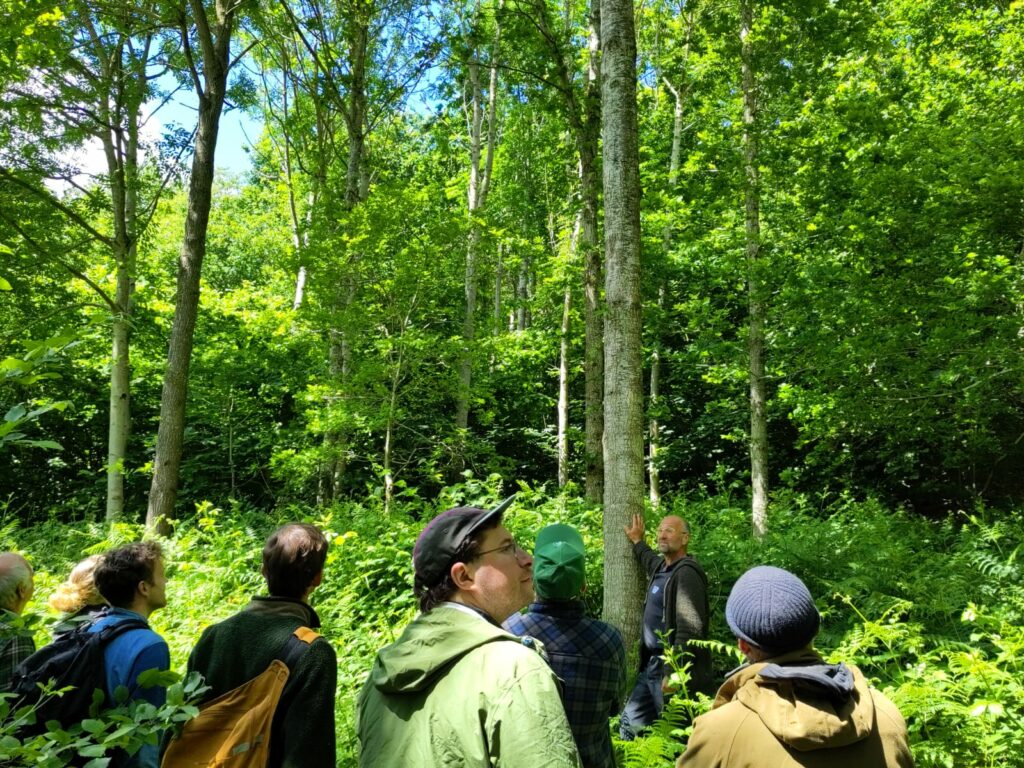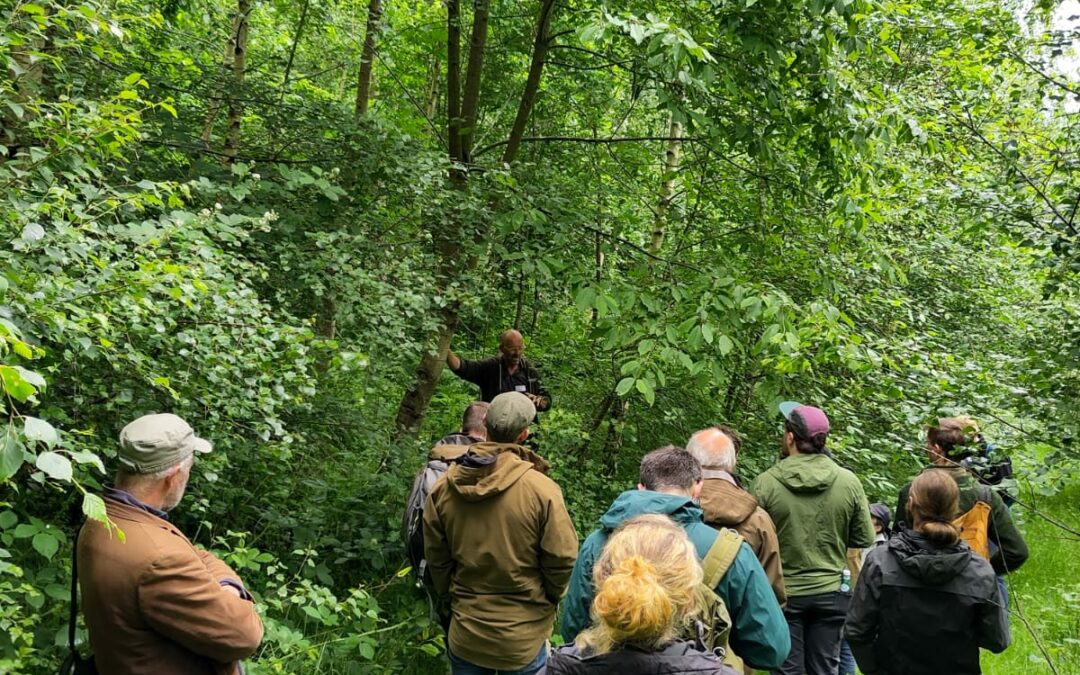This week at Bron Haul we ran a course entitled “Growing broadleaf trees for quality timber”. The course was promoted and administered by The Royal Forestry Society. Many thanks to Andrea Donelly for all her help in making this course possible.
A varied and enthusiastic group of 14 attendees enjoyed a day of glorious weather in our woodland.
Within the framework of looking at our approach to continuous cover broadleaf silviculture, the variety of knowledge and experience within the group led to wide ranging discussions. We were particularly lucky to have James Ramskir Gardiner attending the course. His expertise in the English forestry commission on Agroforestry was interrogated by several questions which he was able to answer in detail.
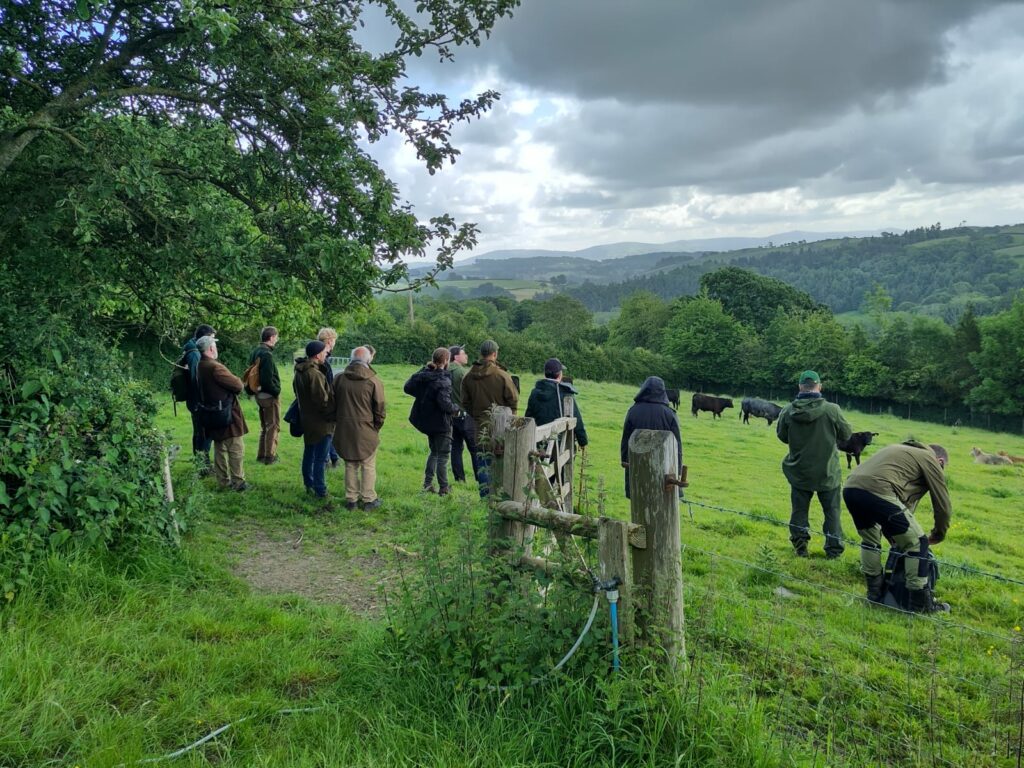
The first stand visited was a 4ha plot that was planted in 2014. Species choice, weed control, formative and high pruning, and early respacing interventions were considered. Pruning using loppers and pole saw were demonstrated.
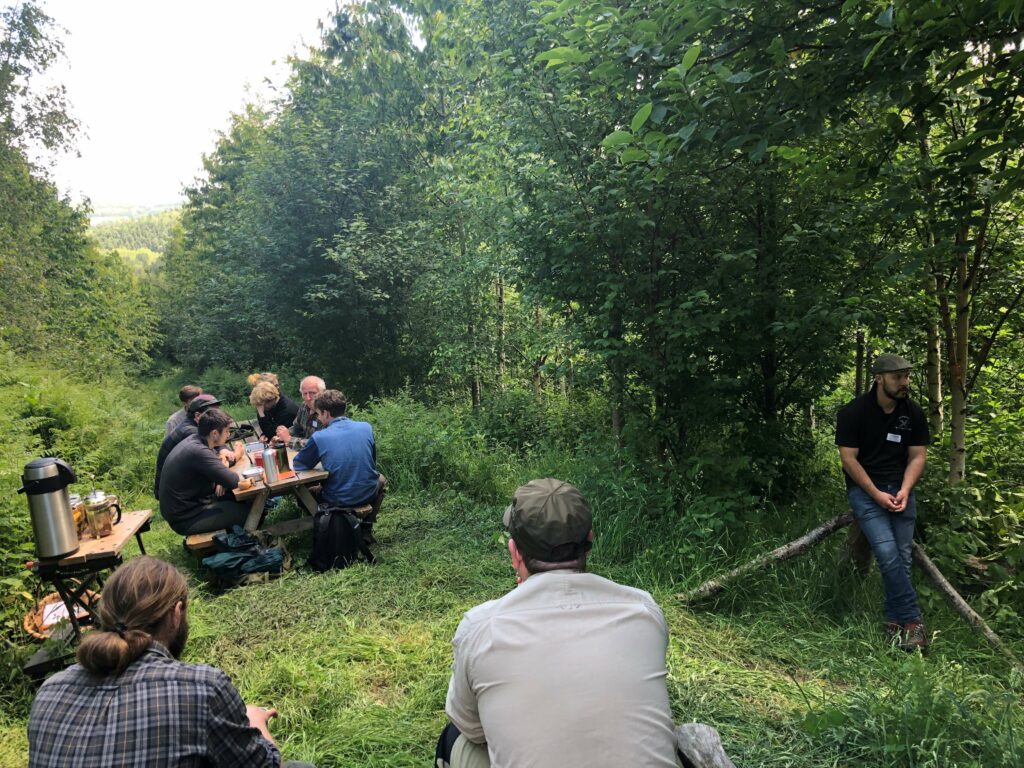
After coffee and biscuits, we went to look at an area planted in 1994. Here we looked at later thinning operations where the stems removed were of a suitable quality and size for milling. Also, we examined the adverse consequences on crown development of delaying thinning decisions too long.
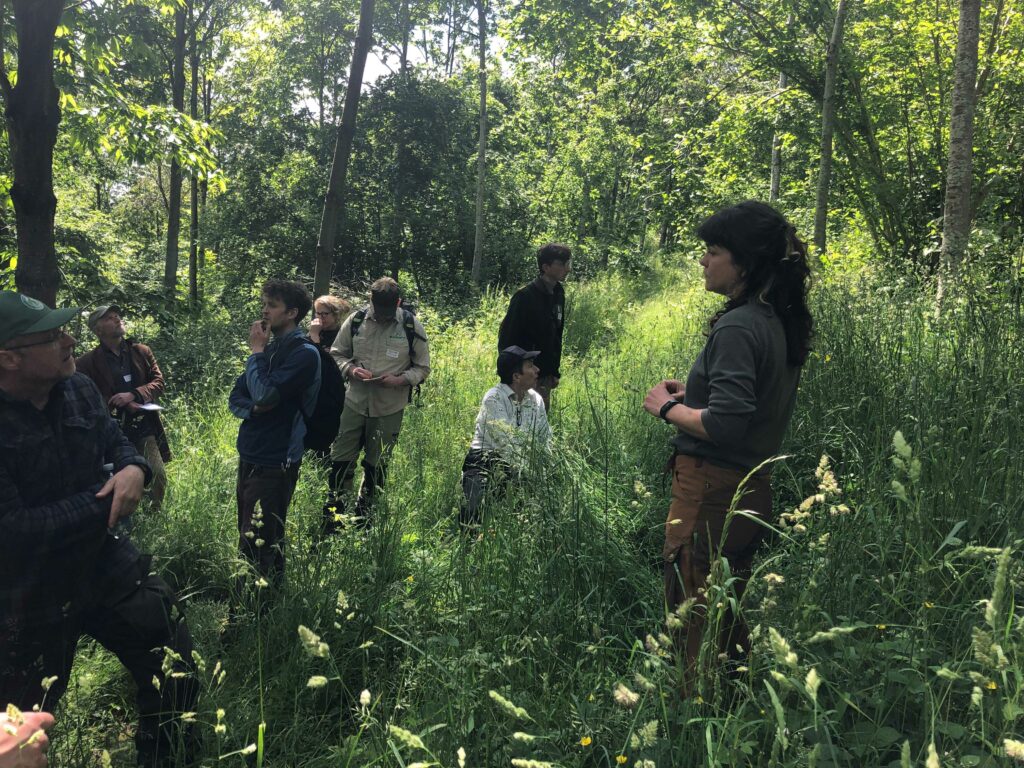
Our forestry roots trainee, Harriet Jenkins, assisted throughout the day, and, after lunch, was able to explain to the group the way in which ‘Stems with a future’ are selected during the third thinning operation, in this stand. Where possible tall, branch-free stems of healthy trees with balanced crowns are chosen in such a way as to maintain the species diversity present. Each of these stems is allowed ample space for crown expansion. Often the under storey is coppiced at the same time. This heavy thinning tends to bring the basal area of the stand down to something like 12-14m2/ha. This relatively low basal area allows enough light to reach the forest floor to allow prolific natural regeneration from coppiced stools, suckering, and seeding. It also promotes vigorous growth in the herb layer. The presence of plentiful brambles was seen where this regenerative thinning had taken place 18 months previously. Experience has shown that after initial vigorous growth the brambles are soon shaded out.
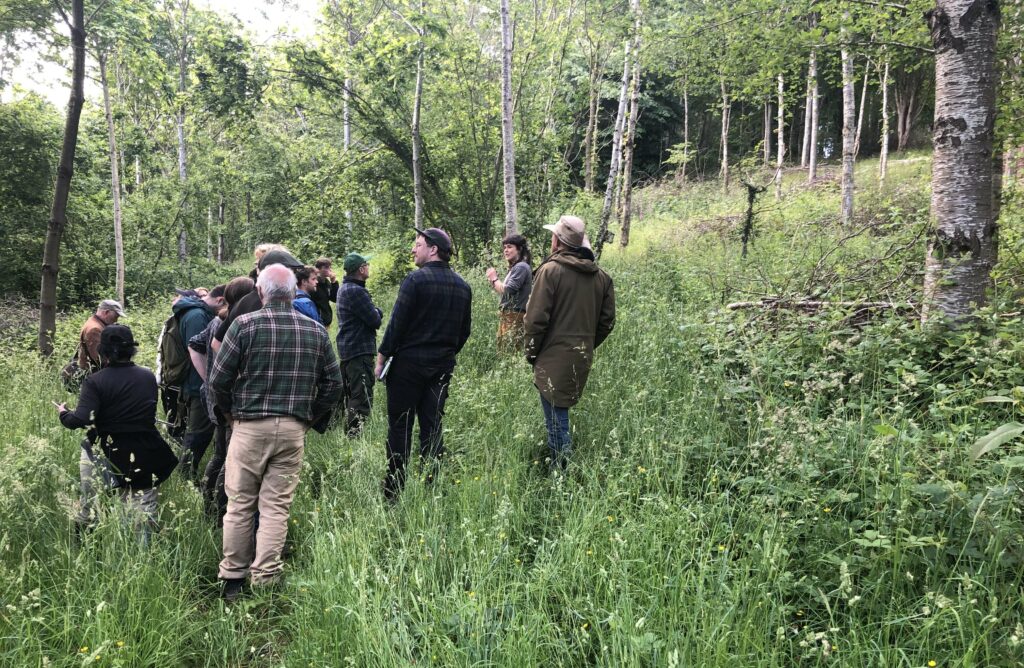
The tour of Bron Haul ended in a block of woodland where the continuous cover management process has been in place for 4 years. Here the stand is showing good species, age, and structural diversity with a second generation of ‘sprinters’ reaching for the light.